
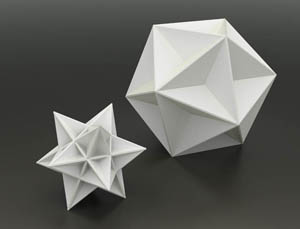
Figure 3: Kepler Polyhedra
Figure 4: Poinsot Polyhedra
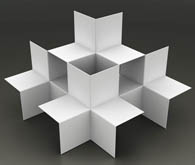


Figure 5: Coxeter 4-6
Figure 6: Coxeter 6-4
Figure 7: Coxeter 6-6
3.1. Antiprisms. Wachman, Burt and Kleinmann’s book describes six infinite groups of cylindrical polyhedra. If we do not allow two adjacent faces of a polyhedron to be coplanar then only two of their families are left: the family of polyhedra composed of antiprismatic rings and the group composed of helicoidal strips of equilateral triangles. In this publication the authors classify these polyhedra as regular uniform polyhedra.
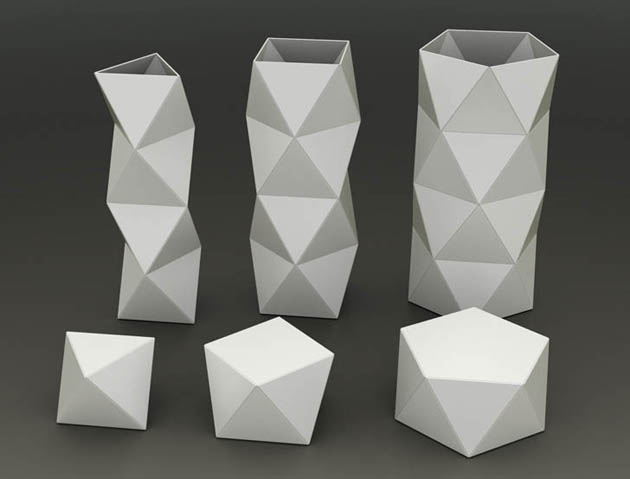
Figure 8: Infinite Polyhedra composed of Antiprismatic Rings
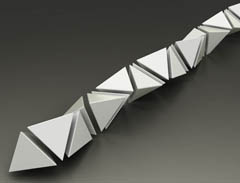
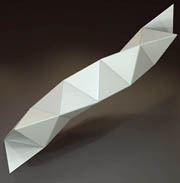
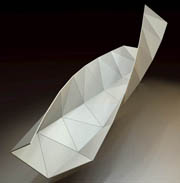
Figure 9: Tetrahedra
Figure 10: Tetrahelix
Figure 11: Unfolding